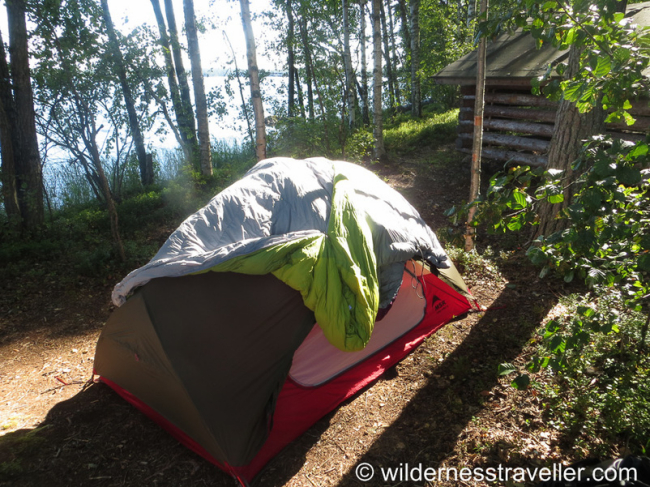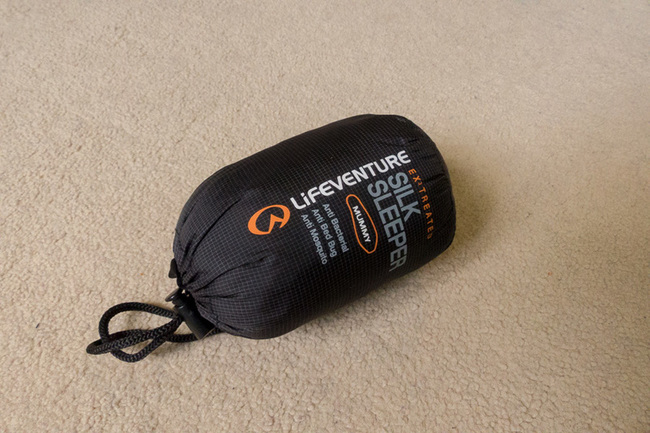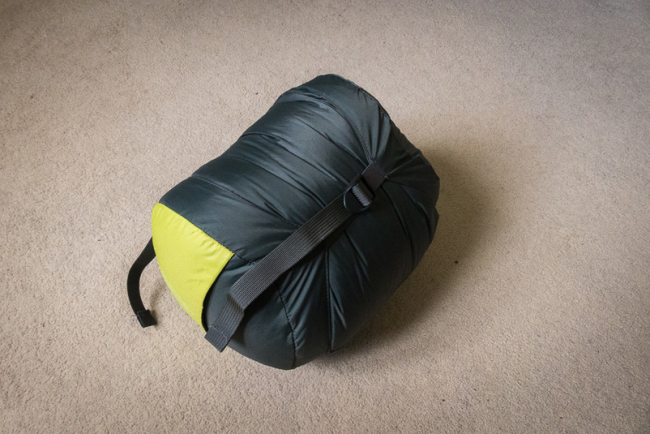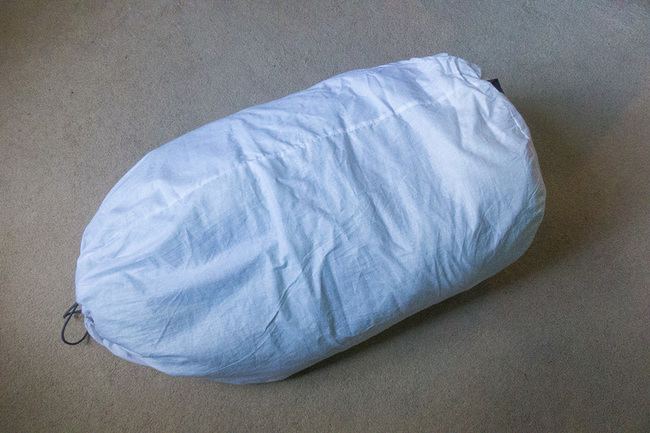Photo Credit: Nathalie Martin
You may well have invested quite a bit of money into your sleeping bag so that you can enjoy as many nights out under the stars as possible. Your sleeping bag will keep you warm and comfortable for years to come as long as you look after it both out in the wilds and at home.
There are two types of insulation used to fill sleeping bags, synthetic and down. Make sure you know which yours is especially before cleaning it as they require different methods to make sure they aren’t damaged in the process. Neither like getting wet but down is particularly not fond of water and can take an age to dry. Not good if you’re relying on it for a good night sleep.
Caring for your sleeping bag in use
General tips
If you’re using a down sleeping bag then it’s best to take it out of it’s stuff sack and give it a good shake some time before you plan on getting into it. This allows the fill to expand and distribute evenly around the bag to reduce any cold spots in the night. If you’re using a synthetic bag it won’t make any real difference.
If you notice any down starting to poke its way out of the sleeping bag then don’t be tempted to pull it out as it’s likely to make the hole bigger. Instead, take hold of the down from the other side and pull it back inside.
Any damage can be repaired quickly with some duct tape or nylon tape but this should only be temporary. When you get home, sew on a more permanent patch. The other option is to send it back to the manufacturer to be repaired. A number of sleeping bag makers offer this service, otherwise you may need to find a company that specialises in sleeping bag repairs.
Keep it dry
Firstly make sure you keep it dry. The easiest way to do that is keep it inside a dry bag or two just to be on the safe side, even if you don’t expect to get wet. The weather, especially in the UK is unpredictable and what might have started out a sunny day can quickly deteriorate into a pretty damp one.
If you’re going on a canoe or kayak trip then there’s always the danger of capsizing and having a wet sleeping bag could potentially be life threatening on a cold night, far from civilization.
Perhaps less obvious than rain or capsizing is the moisture from your own body. This can be quite significant so make sure that you take the time to air your bag every day.

Air your sleeping bag every day to let moisture evaporate.
Once I’m up and dressed I make it a routine to take my sleeping bag out and hang it over my tent or tarp while I make breakfast (as long as it’s not raining). This allows the moisture that your body created overnight to evaporate.
Keep it clean
If you’ve had a long day hiking or paddling then you’re likely to be sweaty and grubby. You don’t want to transfer this dirt to your sleeping bag as it will affect its insulating properties and will require cleaning more often.
Take off any dirty clothes and put on clean clothes before getting into your bag. I like to have a cotton t-shirt to change into in the evening but whatever your preference make sure it isn’t the clothes that you just hiked 20 miles in.
The other thing you can do to keep your sleeping bag clean is to use a liner. They come in a range of different materials including cotton, fleece and silk.

Use a liner to keep your sleeping bag clean.
I don’t really like using a liner myself as I move around a lot in my sleep. When I use a liner I inevitably end up in tangled mess come the morning. On the occasions that I do use a liner, I prefer a silk one because it packs up very small and also provides a decent amount of extra insulation.
Caring for your sleeping bag at home
Storage
One of the worst things you can do to a sleeping bag is keep it compressed. Doing so for a prolonged period of time will affect the bag’s ability to loft. This means it won’t keep you as warm as it used to. This is the case for down and synthetic fills though it affects synthetic bags even more, rendering them almost useless. Unless you want to replace your bag every year or so, never store it compressed.

Fine for when you’re travelling but never store your sleeping bag compressed for any length of time.
The best way to store your sleeping bag is to either keep it flat, hang it up or store it loosely in a large cotton or mesh sack. This allows air to circulate around them rather than trapping air and potentially moisture if left in a waterproof bag for example. Many manufacturers provide storage sacks to keep your sleeping bag in.

Many manufacturers provide a cotton or mesh sack to store your sleeping bag in uncompressed.
Cleaning
Sleeping bags don’t like to be cleaned often. While it’s much more of an issue for down bags, synthetic sleeping bags also don’t fare well with regular washing. It’s better to only wash them when absolutely necessary. That means at the stage where the dirt on the bag is negatively affecting the insulation.
If you get a mark on the outside shell then simply sponge it clean but for a more thorough wash you need to be very careful so as not to damage it.
Down sleeping bags
Every time you wash a down filled sleeping bag it will lose some of its insulating properties, this is why it’s best left until you have to clean it.
Down absorbs a huge quantity of water and will weigh a lot when it’s wet. If you lift it like this it’s likely to tear the baffles under the weight of the down so it’s best to put it in a laundry basket or cradle it in a towel instead.
You can wash your down bag at home though it’s a difficult and time consuming process (allow 6 to 8 hours). Generally hand washing in the bath is the easiest and safest method though you could put it in the washing machine as long as it’s front loading, so you can slide it out rather than lift it when wet.

Make sure to check the label before attempting to clean a sleeping bag yourself.
Don’t use any kind of detergent as this will strip away all of the natural oils found in the down. It’s these natural oils that give down its ability to loft so removing them shorten the life of your sleeping bag. Instead you’ll need to use a specific down soap such as Nikwax Down Wash. Using a down wash will clean the bag and maintain its natural oils.
To dry the sleeping bag you can put it in a tumble dryer on a cool setting, making sure you stop it every hour and manipulate the down in order to maintain its loft. Another suggestion is to throw in a couple of tennis balls to break up any clumps of down while it’s in the dryer.
Personally I would recommend having your down sleeping bag sent off to a professional cleaner. Not a dry cleaner as the solvents used will remove the natural oils from the down in much the same way as using detergent. No, you need to find a specialist sleeping bag cleaning company to do this and again some sleeping bag manufacturers also offer this service.
Synthetic sleeping bags
Synthetic bags can often be put through the washing machine which makes them cheaper and easier to clean than a down bag. Again bear in mind the size and weight of a sleeping bag especially when it’s wet. Large, 4 or 5 season bags may be too big to fit in a standard washing machine.
DWR Treatments
DWR (durable water-repellant) treatments found on the outside shell of a sleeping bag will deteriorate over time. Using some of the methods above such as putting inside a tumble dryer on a cool setting will restore these properties. So too will running a hair dryer over the bag. Be careful not to get it too hot which is why I wouldn’t recommend ironing it. The other option is to use a spray-on DWR treatment which will restore its water repellency.
Related Products
Recent Posts
Share this Post

